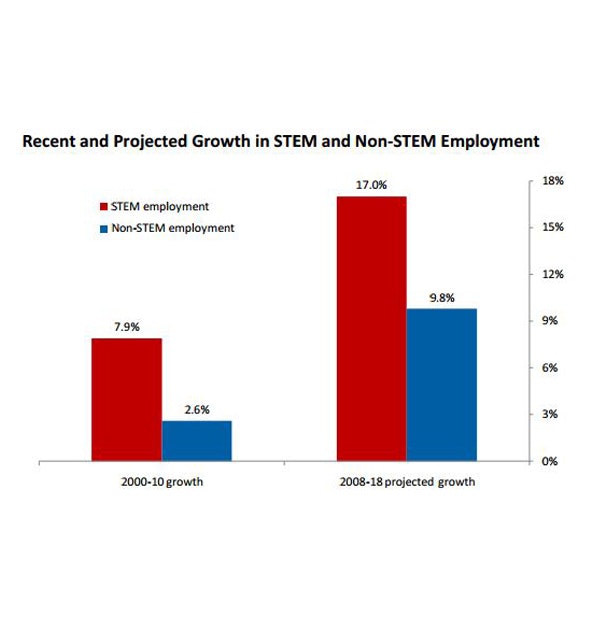Five Ways to Grow the Middle Class
Skills have not kept pace with job requirements, leaving workers unemployed or underemployed.
 Suburban neighborhood in the eastern USA (Shutterstock)
Suburban neighborhood in the eastern USA (Shutterstock)
There is no doubt that the 2016 election was, in part, a battle for America’s middle class. A quick review of the nation’s economic landscape confirms that a painful disconnection still exists in our labor market, even though the United States economy has improved since the Great Recession. Too many Americans remain without jobs, and too many employers across key industries cannot find workers with the right skills at the right time.
I am going to outline five solutions for this challenge but first we need to understand how the nature of work is changing.
National databases reflect a current unemployment rate that translates to 7.8 million unemployed Americans. That rate doesn’t include those who have simply stopped looking for a job or are under-employed.
There are six million young adults in the U.S. who have not obtained a college degree and are neither in school nor working. In the real-time labor market, millions of jobs remain unfilled as employers in all economic sectors continue to struggle to find “qualified” workers. In short, the supply of American labor is not matching the demands of the current U.S. job market.

Why work is changing
Many point to the education system as the source of the problem. Terms like “the skills gap” have become common in business and industry circles.
For many of us engaged in this field, we know that the real cause is more complicated. The nature of work has changed substantially; the infusion of technology in every sector is redefining jobs and occupations. The composition of the workforce and the desires of the workforce have all changed in critical ways.
The nature of work has changed substantially; the infusion of technology in every sector is redefining jobs and occupations. The composition of the workforce and the desires of the workforce have all changed in critical ways.
For the first time in our nation’s history, there are four generations of workers in our domestic workforce. Each generation has its own strengths and weaknesses, and CEOs, operations managers, and human resource professionals have fallen behind in understanding and adapting to this complex talent base.
In short, the job market in the U.S. has not yet adjusted to these changes. The result has been great inefficiencies in the systems that are designed to link “the supply” of educated and skilled workers with “the demands” of business and industry.
Education and workforce development efforts infuse billions of dollars into programs and initiatives to address the disconnection between supply and demand. But too often these efforts are responses to perceived reasons for dislocations or unemployment, such as impacts of trade and globalization or economic shifts in various parts of America.
In truth, the causes of unemployment, under employment, or lack of marketable skills are far less important than understanding the conditions of our workforce and workplaces. They also are less important than implementing solutions that address those conditions, the symptoms of which include:
- Workers are unsure what knowledge, skills, and abilities they need to succeed in today’s jobs;
- Workers must constantly acquire new and often higher-order skills to keep up with the pace of change;
- Workers must master an evolving set of competencies;
- Employers are reluctant to invest in employee training because of declining employee tenure and the fear of employee flight; and
- Job titles and experience levels are inconsistent from company to company, and from industry to industry.
The causes of unemployment, under-employment, or lack of marketable skills are far less important than understanding the conditions of our workforce and workplaces.
Five strategic solutions could help meet these challenges, especially when they are brought to scale with the support of the right policies and investments. These strategies will help individuals understand the skills they need to get and keep good jobs, allow educators to understand how best to equip students and transitioning workers, and provide employers with the workforce they need.
1) Understand and respond to labor market demands
Traditional national databases too often only present a static, stagnant view of labor market demand, relying on traditional job and occupation titles, degrees, and years of experience. We need to become global leaders in understanding regional labor market demands. This requires using data from employers about requisite skills.
Then, we can help employers start hiring for those skills and abilities. We can develop educational and training opportunities that are aligned to the knowledge and skills in demand. And we can help workers understand their marketable skills and the shortest routes to acquiring the right skills.
All of this can help us create digital tools that allow workers to see where jobs with their skills are located. These tools can help workers visualize the gaps between their current skills and those the market demands. For example, the maps can illustrate how skills gained in an industry sector like retail can transfer to required skills in another sector like manufacturing.
These digital maps can benefit employers and employees alike. High-growth opportunities will be readily identifiable and presented as a priority to potential employees.
2) Improve foundational and STEM skills
Finding workers with what business executives call “common employability skills” is a challenge for employers across all parts of the economy. These foundational skills include an academic grounding in reading and math; individual abilities such as dependability, initiative, work ethic and integrity; workplace skills such as planning and decision-making; and people skills such as teamwork and respect.
No longer can we assume prospective employees will have learned these foundational skills from parents, faith institutions, or community service. We have to begin teaching and assessing them before new employees can learn technical and higher-level skills.
 Source: ESA calculations using Current Population Survey public-use microdata and estimates from the Employment Projections Program of the Bureau of Labor Statistics.
Source: ESA calculations using Current Population Survey public-use microdata and estimates from the Employment Projections Program of the Bureau of Labor Statistics.
Many middle-class jobs also require a necessary foundation in science, technology, engineering, and math (STEM). Employment in the STEM workforce is expected to grow by 17 percent by 2018. Yet the number of college graduates in this field continues to decline. In recent years, just 18 percent of bachelor’s degrees awarded were in STEM fields. That’s down from 24 percent two decades ago. The widening of the gender and racial gap within the STEM workforce is even more alarming.
We need to correct these inequities by increasing access and equity in the educational opportunities that lead to STEM jobs. That includes in the critical fields of manufacturing, energy, and health care.
3) Workers need valid, portable credentials
By 2020, nearly two out of every three U.S. jobs will require some postsecondary education and training. They have become the gateway to the middle class as many jobs that require only a high school education or less have disappeared.
Postsecondary education too often equates only to a bachelor’s degree. The U.S. lacks a strategy that recognizes the importance of our highly-skilled technical workforce and aligns postsecondary education to the technical skills that are in demand. We measure seat time in four-year universities more than developing an ability to apply knowledge in actual performance on the job.
By 2020, nearly two out of every three U.S. jobs will require some postsecondary education and training. They have become the gateway to the middle class.
That said, there is a growing recognition and investment in the importance of standards-based, nationally-portable, industry-recognized credentials that have real value in the labor market. These credentials often are designed to industry standards and are primarily attained in community and technical colleges. And they are awarded only after a third-party assesses whether a student has learned them.
Still, much work needs to be done to educate employers on the knowledge, skills, and abilities these credentials represent. The recruitment, screening, and hiring practices of employers also needs to recognize competencies rather than traditional degrees and “seat time” in classrooms. And we need to align postsecondary learning outcomes to these industry credentials.
 Average number of credits earned in each subject area by public high school graduates, 1990 to 2009. (U.S. Department of Education, National Center for Education Statistics, High School Transcript Study, 1990, 2000, 2005, and 2009. This figure was first published in the NCES Data Point)
Average number of credits earned in each subject area by public high school graduates, 1990 to 2009. (U.S. Department of Education, National Center for Education Statistics, High School Transcript Study, 1990, 2000, 2005, and 2009. This figure was first published in the NCES Data Point)
4) Restore Career & Technical Education pathways to employment
For decades, the nation’s Career & Technical Education system has suffered from a lack of investment, policy, and political support. As an example, we spend about $1.4 trillion annually in education and job training but Congress only authorizes on average about $1.2 billion for CTE programs under the Carl D. Perkins Act.
We need to restore this important pathway to employment for the middle class. That means recognizing the Career & Technical Education system is responsive to the job market. At the same time, we need to provide opportunities for all students and transitioning workers through this system.
5) Connect the worlds of work and learning
The U.S. seems to be moving out of a pure “knowledge economy” that rewards workers based on knowledge or degrees to a “performance economy” that rewards using knowledge to improve performance. This shift requires a stronger connection between the worlds of work and learning.
The good news is that educational opportunities that combine working and learning are being created nationwide. These options generally emphasize early college or dual enrollment models that “stack” credentials along the way.
The good news is that educational opportunities that combine working and learning are being created nationwide.
These pathways offer more “on” and “off” ramps to education and work. And they provide students and workers with experiences in the workplace as part of their learning. They “earn” while they learn, which is critical for workers who are redirecting their careers to benefit from the global economy.
Our workplaces increasingly are hotbeds of innovation, entrepreneurship, and opportunities. And we are seeing an unprecedented explosion of learning options and pathways. The challenge is to embrace those strengths and find the political will to leave behind inefficient and ineffective systems. At the same time, we need to expand these strategic solutions.
Then, we can offer economic opportunity and paths to the middle class for all.
The Catalyst believes that ideas matter. We aim to stimulate debate on the most important issues of the day, featuring a range of arguments that are constructive, high-minded, and share our core values of freedom, opportunity, accountability, and compassion. To that end, we seek out ideas that may challenge us, and the authors’ views presented here are their own; The Catalyst does not endorse any particular policy, politician, or party.

